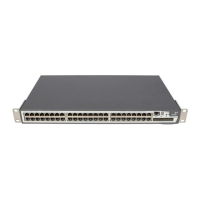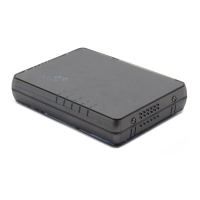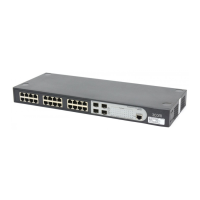RADIUS Protocol Configuration Commands 379
server, or display the packets according to user session ID or username. You may
also display the request packets saved during a specified time range. The displayed
packet information can help with diagnosis and troubleshooting.
Related commands: reset stop-accounting-buffer, stop-accounting-buffer
enable
, retry stop-accounting.
Example
To display the stopping accounting requests saved in the system buffer since 0:0:0
to 23:59:59 on August 31, 2002, enter the following:
<SW5500>display stop-accounting-buffer time-range 0:0:0-2002/08/31
23:59:59-2002/08/31
Total find 0 record
key Syntax
key { accounting | authentication }
string
undo key { accounting | authentication }
View
RADIUS Scheme View
Parameter
accounting: Configures to set/delete the authentication key for the RADIUS
accounting packet.
authentication: Configures to set/delete the encryption key for RADIUS
authentication/authorization packet.
string
: Specifies the key with a character string not exceeding 16 characters. By
default, the key is “3Com”.
Description
Use the key command to configure encryption key for RADIUS
authentication/authorization or accounting packet. Use the
undo key command
to restore the default key.
RADIUS client (Switch) and RADIUS server use MD5 algorithm to hash the
exchanged packets. The two ends verify the packet through setting the key. Only
when the keys are identical can both ends accept the packets from each other and
give responses. So it is necessary to ensure that the keys set on the Switch and the
RADIUS server are identical. If the authentication/authorization and accounting are
performed on two different servers with different keys, you should set two keys
respectively.
Related commands: primary accounting, primary authentication, radius
scheme
.
Example
Example 1:

